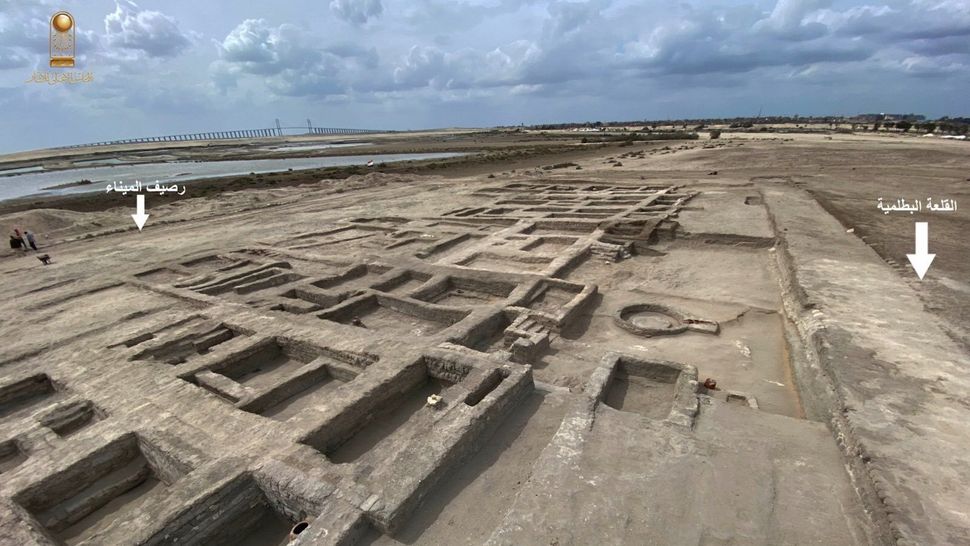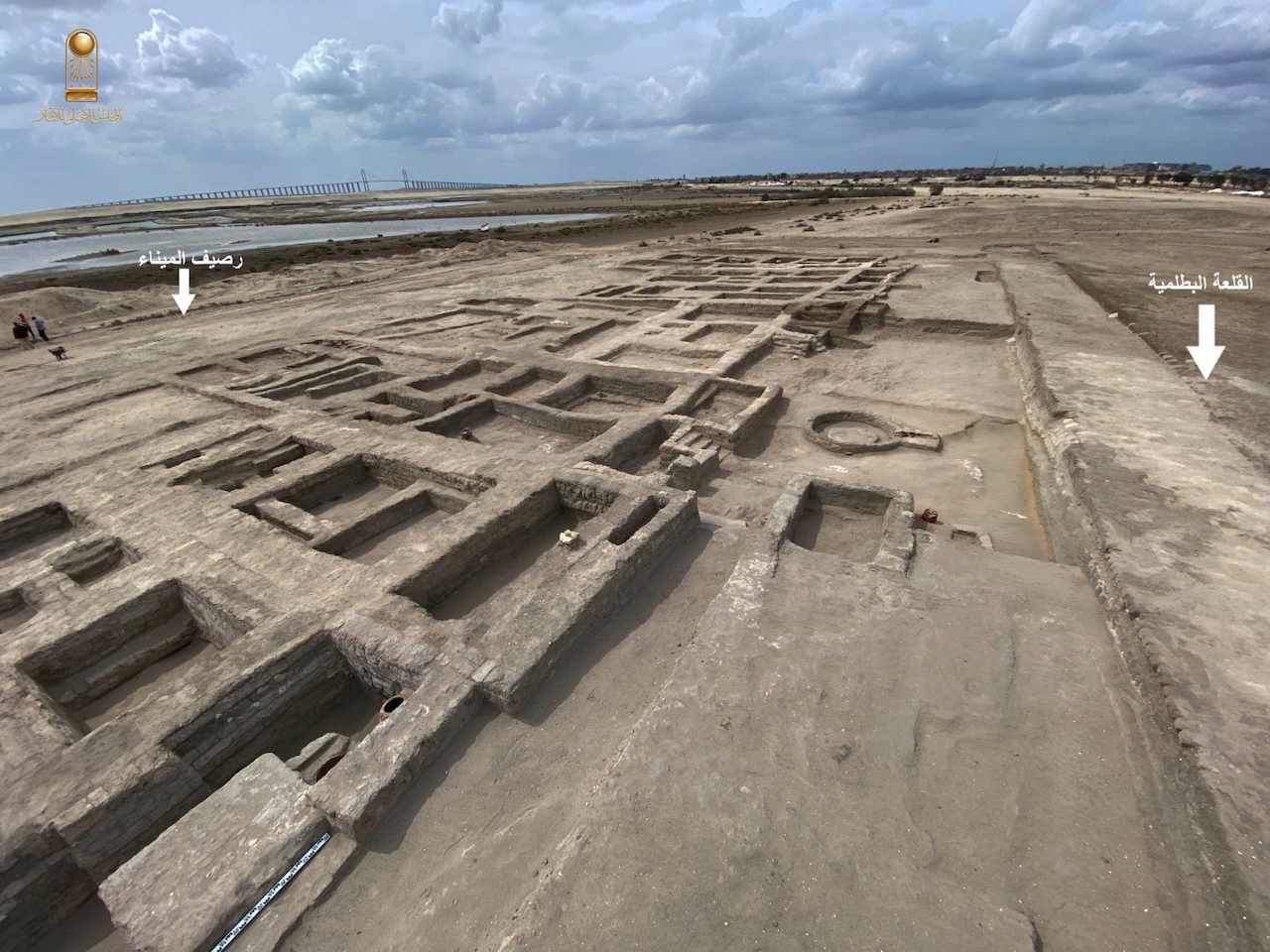Anthropology
Related: About this forumArchaeologists unearth tree-lined walkway that led to ancient Egyptian fortress in Sinai Desert News By Owen Jarus publi
By Owen Jarus published May 6, 2025
The ancient Egyptian fortress was in use around 2,000 years ago in the Sinai Desert.

This area shows parts of the fortress that archaeologists are uncovering in the Sinai Desert of Egypt. It was rebuilt and modified over a period of centuries. (Image credit: Photo courtesy of the Egyptian Ministry of Tourism and Antiquities)
A large ancient Egyptian fortress in the northern Sinai Desert had an elaborate landscape of 500 trees leading to its entrance more than 2,000 years ago, new excavations reveal.
Archaeologists made the finding while uncovering more of a fortress that was rebuilt and modified over several centuries. The existence of the fortress has been known for decades. However, new finds by archaeologists from Egypt's Ministry of Tourism and Antiquities shed light on what the fortress was like more than two millennia ago.
Located at the site of Tell Abu Saifi, the fortress was in use during the Ptolemaic period (circa 304 to 30 B.C.), when Ptolemy I — a general of Alexander the Great — and his descendants ruled Egypt, and the Roman period (circa 30 B.C. to A.D. 642), when Egypt was a province in the Roman Empire.
They found that during the Ptolemaic period, there were 500 planting circles surrounded with clay on both sides of a road that led to the entrance of the fortress. These would have contained trees, the ministry said in a translated statement. It’s not clear what exactly the climate was like in the Sinai Desert around 2,000 years ago.
More:
https://www.livescience.com/archaeology/ancient-egyptians/archaeologists-unearth-tree-lined-walkway-that-led-to-ancient-egyptian-fortress-in-sinai-desert
Lovie777
(19,128 posts)they seemed to be more advanced, and then the dark ages kept reappearing, like now.
Judi Lynn
(163,626 posts)Located in the northern Sinai Desert, the site is shedding new light on defensive structures built to protect Egypt’s eastern borders

Tell Abu Saifi features housing units where soldiers and their families may have lived. Egypt's Ministry of Tourism and Antiquities
Archaeologists in Egypt are unraveling the secrets of an ancient military site used during the Ptolemaic dynasty and the Roman era.
The fortress, which was discovered decades ago, is located within the archaeological site of Tell Abu Saifi in Egypt’s northern Sinai Desert. The site holds the remains of ancient military structures, including dried-up dockyards where Ptolemaic ships may have been built and repaired.
Now, researchers have uncovered additional architectural elements of the ancient site, including housing units, kilns, a defensive trench and a wide, limestone-paved road once lined with trees, according to a statement from Egypt’s Ministry of Tourism and Antiquities.
Egypt’s Ptolemaic dynasty began with the rule of Ptolemy I Soter around 305 B.C.E. The desert fortress was likely built during this time and later modified by the Romans, who ruled over Egypt beginning in 30 B.C.E. During these periods, the fortress of Tell Abu Saifi played a pivotal role in protecting Egypt’s eastern borders.
“This discovery offers a deeper understanding of the defensive systems established in eastern Egypt and reaffirms Tell Abu Saifi’s historical role as both a military and industrial hub across various eras,” says Sherif Fathy, Egypt’s Minister of Tourism and Antiquities, per Ahram Online’s Nevine El-Aref.
More:
https://www.smithsonianmag.com/smart-news/archaeologists-uncover-evidence-of-ancient-tree-lined-road-in-egyptian-military-fortress-180986594/